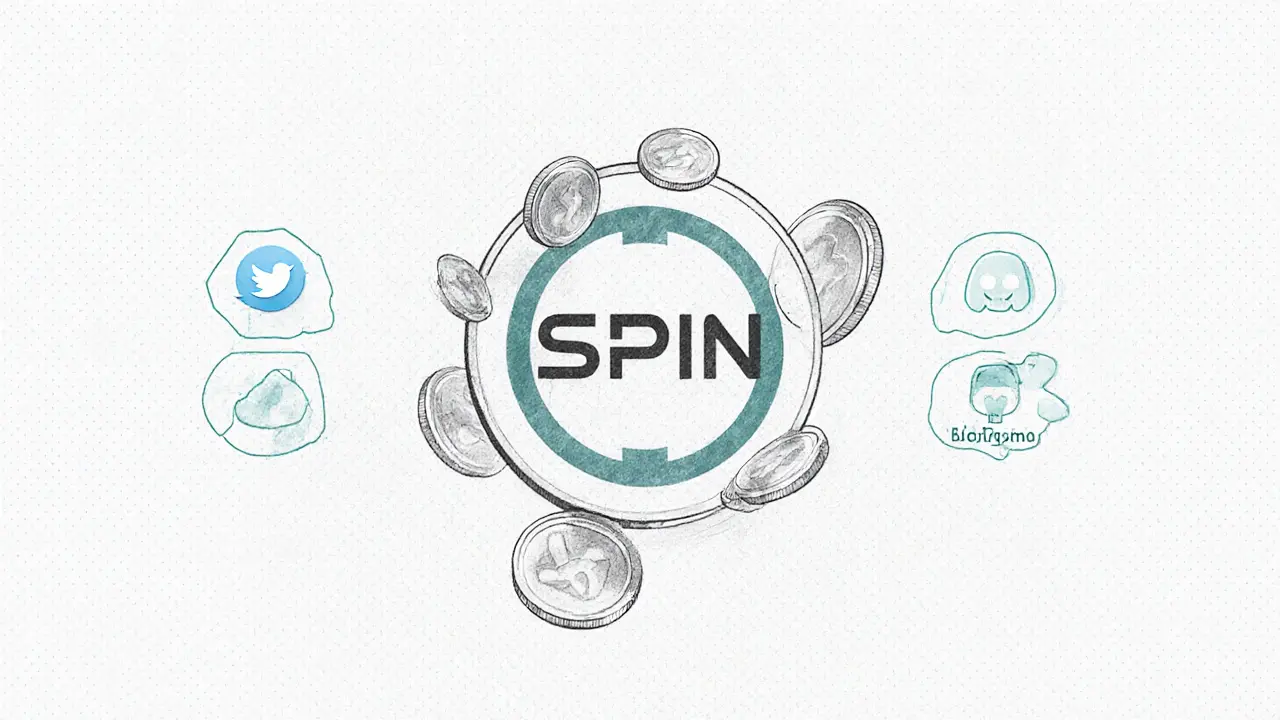SPIN token: What it is, where it's used, and what you need to know
When you hear SPIN token, a low-cap blockchain token often tied to gambling or gaming platforms. Also known as SPIN, it's one of hundreds of tokens that pop up on decentralized exchanges with little more than a logo and a social media hype cycle. Unlike Bitcoin or Ethereum, SPIN doesn't solve a clear problem. It doesn't power a major network or enable smart contracts. Instead, it’s a speculative asset—often launched to attract traders looking for quick flips on obscure platforms.
SPIN token usually appears alongside other meme coins, crypto assets with no real utility, driven by community hype and social media trends like Dogecoin or Shiba Inu. But unlike those, SPIN rarely has lasting traction. Most listings are on small DEXs with thin liquidity, meaning big price swings are normal—and selling can be hard when the crowd moves on. It’s often linked to decentralized finance, crypto platforms that offer lending, staking, or betting without traditional banks projects that promise high rewards but lack audits, team transparency, or long-term roadmaps. You’ll find it in posts about airdrops, gambling dApps, or Telegram-based pump groups—but never in serious investment guides.
What makes SPIN different from other obscure tokens? Not much. Its value comes from short-term speculation, not technology. If you’re holding it, you’re betting that someone else will pay more for it tomorrow. That’s not investing. That’s gambling with crypto. And like any gamble, the house usually wins. The posts below show you exactly how SPIN appears in real-world crypto scenes: as a token in a failed airdrop, a token tied to a broken game, a token nobody talks about anymore. You’ll see how people get sucked in, how quickly the price drops, and why most who chase it end up losing money. There’s no secret formula here. Just a pattern: hype, pump, dump, disappear.
SPIN Airdrop by Spintop: How It Worked, Who Got Tokens, and What Happened After
The SPIN airdrop by Spintop Network in 2021 gave 500 tokens to 5,000 early users. Learn how it worked, why guilds mattered, and why the project faded despite a smart launch.
VIEW MORE
